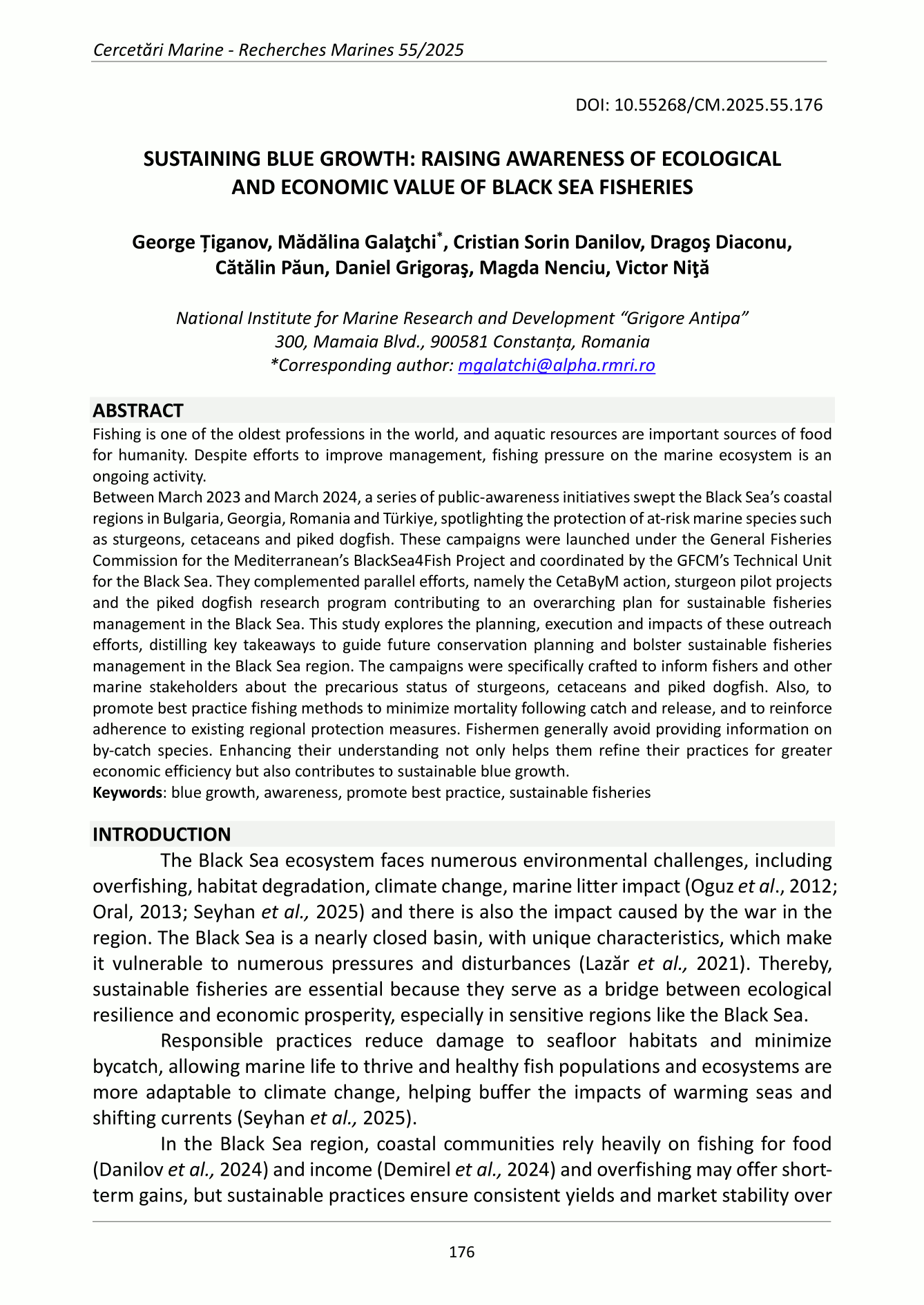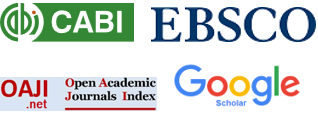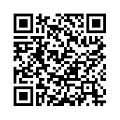SUSTAINING BLUE GROWTH: RAISING AWARENESS OF ECOLOGICAL AND ECONOMIC VALUE OF BLACK SEA FISHERIES
DOI:
https://doi.org/10.55268/CM.2025.55.176Keywords:
blue growth, awareness, promote best practice, sustainable fisheriesAbstract
Fishing is one of the oldest professions in the world, and aquatic resources are important sources of food
for humanity. Despite efforts to improve management, fishing pressure on the marine ecosystem is an
ongoing activity.
Between March 2023 and March 2024, a series of public-awareness initiatives swept the Black Sea’s coastal
regions in Bulgaria, Georgia, Romania and Türkiye, spotlighting the protection of at-risk marine species such
as sturgeons, cetaceans and piked dogfish. These campaigns were launched under the General Fisheries
Commission for the Mediterranean’s BlackSea4Fish Project and coordinated by the GFCM’s Technical Unit
for the Black Sea. They complemented parallel efforts, namely the CetaByM action, sturgeon pilot projects
and the piked dogfish research program contributing to an overarching plan for sustainable fisheries
management in the Black Sea. This study explores the planning, execution and impacts of these outreach
efforts, distilling key takeaways to guide future conservation planning and bolster sustainable fisheries
management in the Black Sea region. The campaigns were specifically crafted to inform fishers and other
marine stakeholders about the precarious status of sturgeons, cetaceans and piked dogfish. Also, to
promote best practice fishing methods to minimize mortality following catch and release, and to reinforce
adherence to existing regional protection measures. Fishermen generally avoid providing information on
by-catch species. Enhancing their understanding not only helps them refine their practices for greater
economic efficiency but also contributes to sustainable blue growth.

Downloads
Published
How to Cite
Issue
Section
License

This work is licensed under a Creative Commons Attribution-NonCommercial-NoDerivatives 4.0 International License.
This is an open access journal, which means that all content is freely available without charge to the user or his/her institution. Users are allowed to read, download, copy, distribute, print, search, or link to the full texts of the articles, or use them for any other lawful purpose, without asking prior permission from the publisher or the author. This is in accordance with the BOAI definition of open access.






